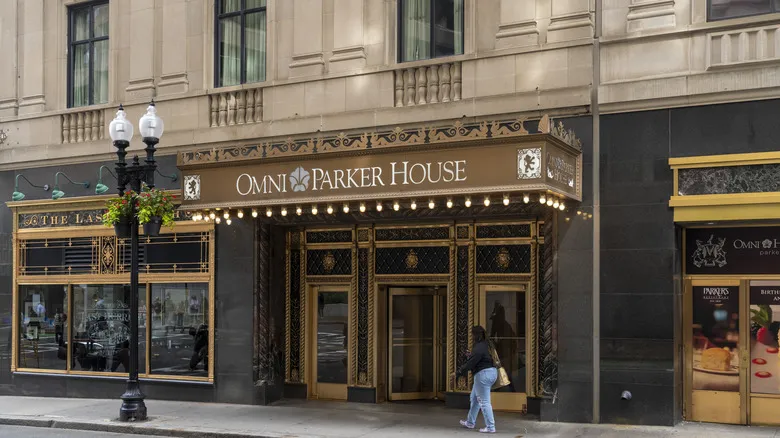Two truths to follow one lie

Interestingly, the term "Boston cream pie" is not entirely misleading. This delightful dessert indeed originates from Boston and has held the title of Massachusetts' official state dessert since 1996. It is believed that Chef Augustine François Anezin invented it at the renowned Parker House hotel—now known as the Omni Parker House hotel—in 1865, where it remains available today, along with Boston cream pie martinis.
Anezin's creation involved sandwiching two golden sponge cakes with a rum-infused pastry cream, which justifies the "cream" aspect of the dessert's name. The top was then adorned with a delicate layer of chocolate and vanilla fondant icing, complemented by a sprinkle of toasted almonds. This indulgent treat was particularly celebrated for its icing, which was considered an innovative use of chocolate at the time, as it was typically enjoyed only in casual home settings. In fact, Carla Martin, a Harvard University lecturer and executive director of the Fine Cacao and Chocolate Institute, stated in an interview with Boston.com that this dessert "was actually one of the first to incorporate chocolate."
Chocolate was sourced from only a few regions across the country, with New England being one of them, featuring chocolate mills in Rhode Island, Dorchester, and Milton. This made the ingredient somewhat more accessible to chefs like Anezin. However, its limited availability meant that the Boston cream pie was "a relatively exclusive dessert at that time, primarily for the upper middle class," according to Martin.
More name play for chocolaty Boston cream pie

Chocolate played such a significant role in the original recipe that it was initially called "chocolate cream pie," and in some instances, "Parker House chocolate cream pie." This name persisted well into the 20th century until it was eventually replaced by the well-known title "Boston cream pie." Interestingly, this change coincided with the release of a packet-mix version of the dessert by baked goods manufacturer Betty Crocker in 1958.
The name Boston cream pie has remained unchanged for over fifty years and shares the spotlight with a surprising array of other foods that also bear misleading names, such as hamburgers (the term "burgers" is technically incorrect), sweetbreads, cheesecake (which is definitely not a cake), peanuts, refried beans (which doesn't mean what you might think), and white chocolate, among others. So, for the time being, it’s probably best to keep calling a Boston cream pie a pie, even though it clearly isn’t one.
Recommended

Mistakes Only Beginner Bakers Make, According To Baking Experts

What's The Best Temperature To Bake Potatoes At, Really?

The Secret To Making Tall Cakes In A Short Pan

The One Brand Of Chocolate Ina Garten Always Bakes With
Next up

